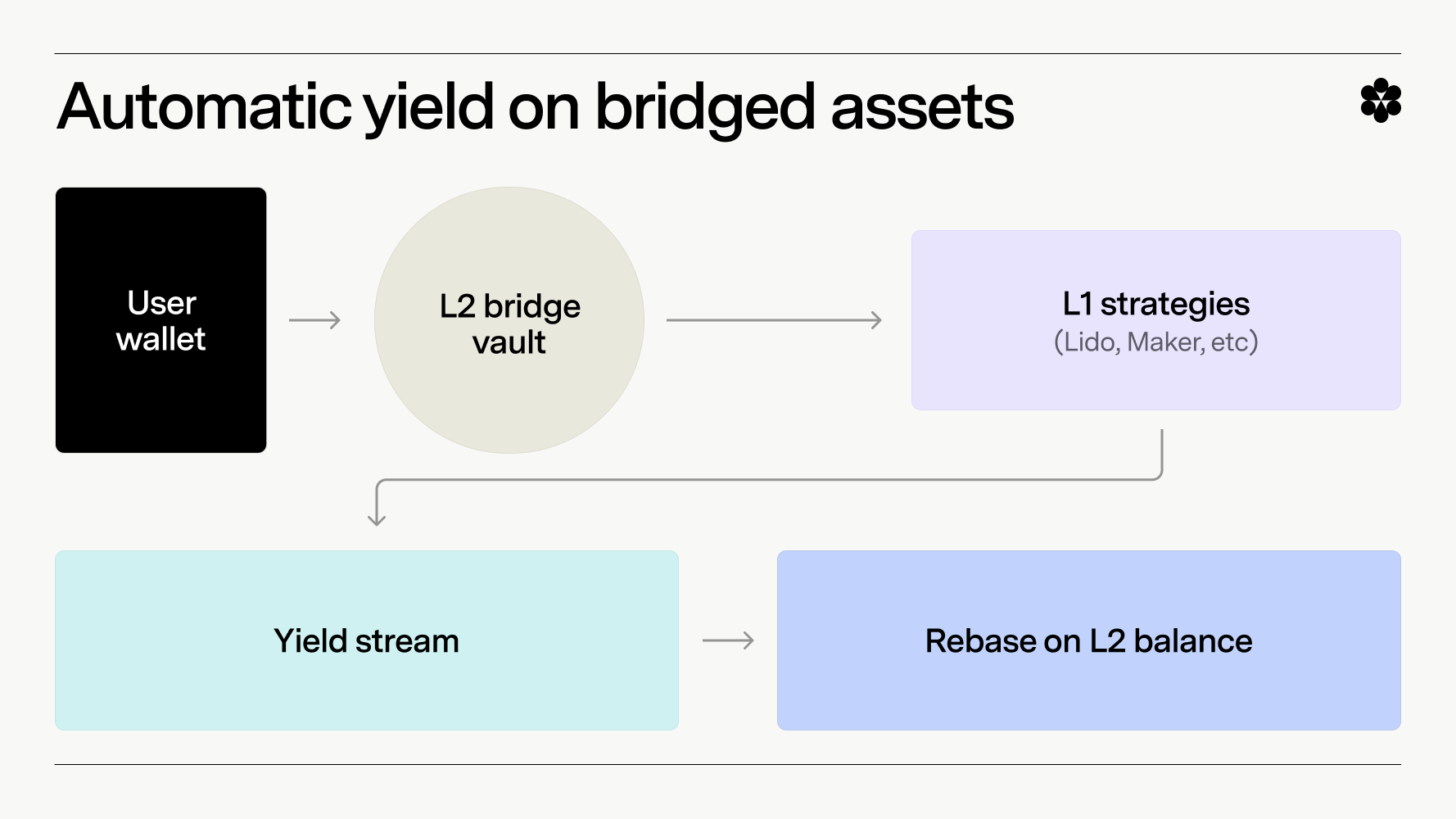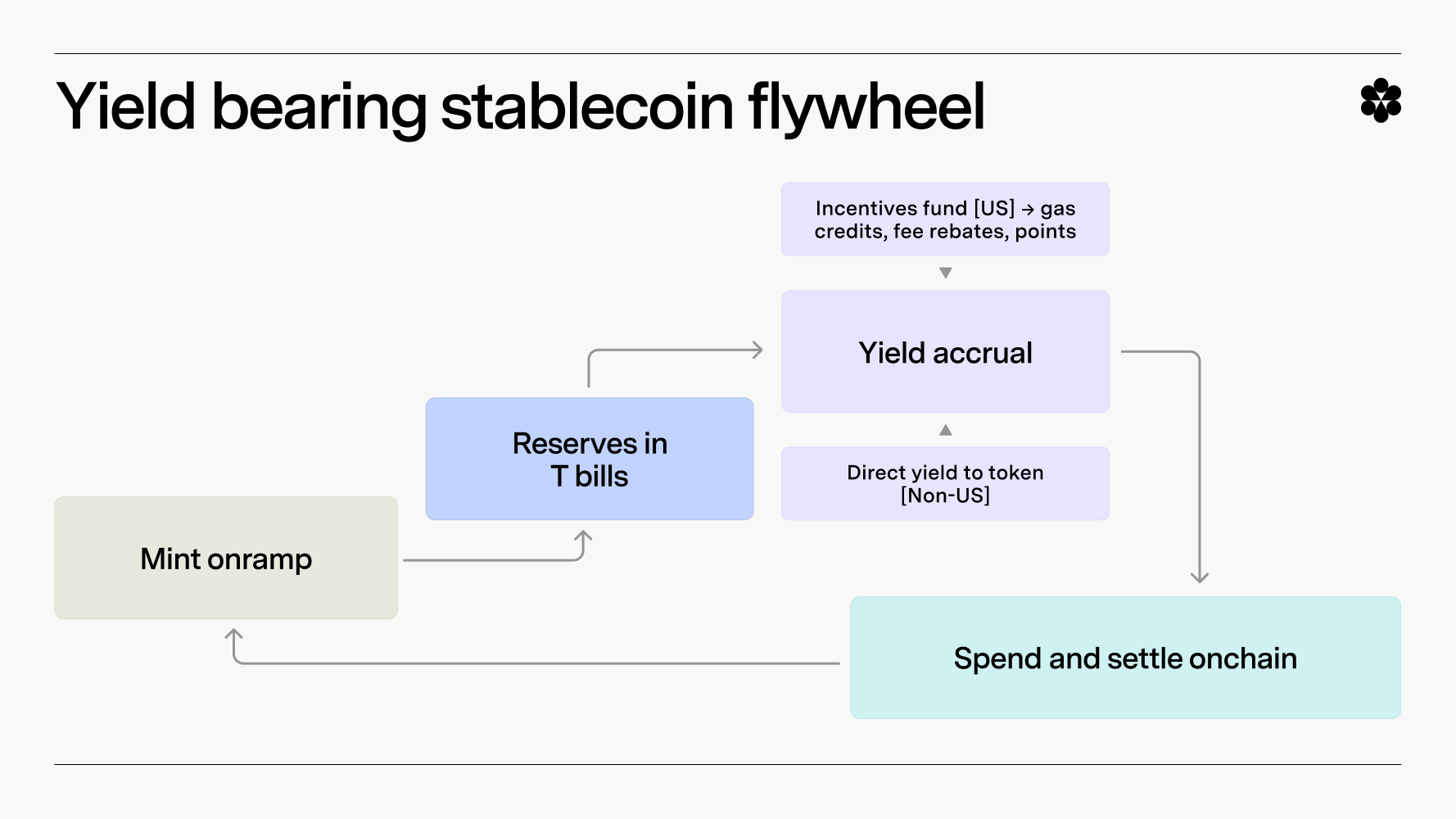Native Yield: 3 Ways Chain Operators Can Give Users Automatic Returns

Every chain needs to offer something valuable and differentiated to attract users. Native yield is one compelling strategy.
Native yield refers to any mechanism built into the protocol itself that gives users a return simply for holding assets on the chain, rather than from DeFi apps built on top of the chain. Historically, the closest thing to this has been Proof-of-Stake (PoS) rewards generated on L1 chains like Ethereum – but those rewards only go to users who actively help secure the network. Native yield gives all users passive returns on their assets.
Native yield is most commonly implemented on rollups, as the bridges so central to their design can straightforwardly be used to generate the necessary yield. But there are native yield options for L1s as well. Below, we’ll look at three ways chains can implement native yield.
Automatic yield on bridged assets
The most straightforward way for rollups to offer native yield is to deposit the assets held in the chain’s bridge into yield-generating protocols, and give the returns to users.
Blast pioneered this model with cross-chain yield vaults. When users bridge ETH and stablecoins from Ethereum to the L2, the chain automatically deposits those assets into established, low-risk yield-generating protocols on the L1, such as Lido for ETH staking and MakerDAO for stablecoins. The yield generated is then passed back to the users on the L2, with their balances automatically rebasing to reflect the accrued interest. In other words, any time users are holding funds on the chain, their balances are going up thanks to the yield.
There are several yield-as-a-service providers that can help you replicate this model if you don’t want to build it yourself. Veda, which manages over $3 billion in total value locked (TVL) across their vault infrastructure, and Nucleus, which brings "yield by default" to more than 20 networks, use standardized vault architectures to manage rebasing and underlying yield strategies. These providers typically use simple vault contracts with peripheral contracts to handle rebasing, minting/redeeming vault shares, and pricing. Concrete, another leading vault manager with over $1 billion TVL in DeFi, serves as both vault deployer and strategy manager for chains looking to implement native yield.

Issue a yield-bearing stablecoin
Another powerful method for providing native yield is to integrate a yield-bearing stablecoin into your ecosystem. There are several yield-bearing stablecoins your chain could adopt as its preferred or “official” stablecoin, similar to what Katana has done with Agora. Other providers like M^0, Paxos, Ethena and Brale, have similar offerings, which can also be whitelisted to allow the chain to issue the coin under its own branding.
Under this model, the U.S. dollars backing the stablecoin are invested in stable assets like U.S. treasuries – but whereas most stablecoin issuers keep the returns on those investments as revenue, you can return it to users. Unlike the yield-on-bridged-assets model, the yield-bearing stablecoin model is equally applicable to both L1s and L2s.
Keep in mind however that under the GENIUS Act, this model cannot be offered to U.S. users. You could either exclude them, or give them a stablecoin that passes yield indirectly, for instance via lower fees or rebates.

Make a yield-bearing asset your custom gas token
A more forward-looking but potentially powerful approach to native yield is to use a yield-bearing asset as your chain's custom gas token. Instead of using a static token like ETH for gas, the chain can designate a yield-bearing asset, such as stETH, as the unit for paying transaction fees. Every user must hold the gas token to bridge onto the chain and to transact once there, so any yield that token generates while sitting idle would effectively be native yield.
L2s are the most natural testing ground for this model, given their flexibility in defining their own gas tokens. As the infrastructure for L2s continues to mature and the demand for capital efficiency grows, we expect to see more chains experiment with yield-bearing gas tokens as a way to attract and retain users.

Native yield can be your competitive advantage
Native yield can make your chain a more compelling, capital-efficient network for users. And as we see above, there are several ways to implement native yield mechanisms.
By offering yield on bridged assets, integrating native yield-bearing stablecoins, and even experimenting with yield-bearing gas tokens, chains can create a more compelling and capital-efficient environment for their users. Together, these models create a world where yield is not an extra step but a core property of holding assets onchain – a powerful lever for chain operators building the next generation of ecosystems and better experience for users.

